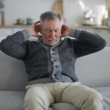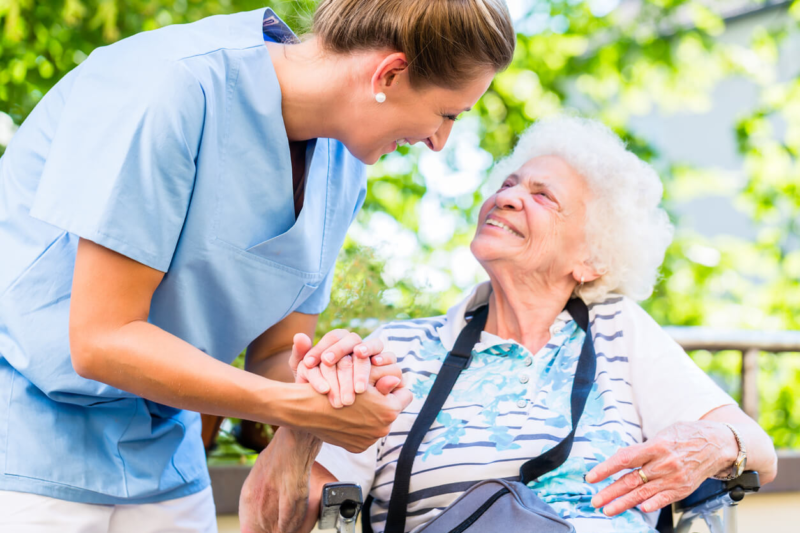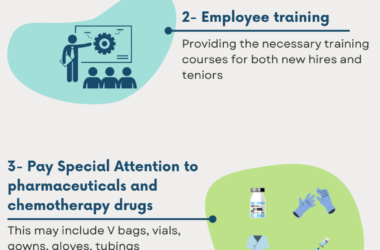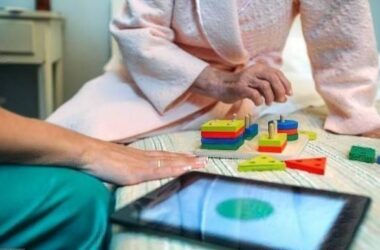This article is for informational purposes only and is not meant to offer medical advice.
The first thing to wonder about when a natural or manmade disaster occurs is how safe our dears are. An immediate reaction would be to check in with them and make sure they are safe and sound. However, if one of our dears is elderly or has a disability, it can be too late to intervene. This is when our Disaster Preparedness For Seniors and People With Disabilities guide comes in handy!
This guide aims at keeping them resourced appropriately and alert to danger. These carefully-selected assistive technologies offer an early warning and emergency awareness and quick response to any type of danger in both critical and regular times.
How Can We Protect Our Seniors During Disasters?
Statistics have shown that seniors are the category the most vulnerable to disasters. In 2005, Hurricane Katrina left a massive death toll with 75% of fatalities going over 60. Although this age category represents only 15% of the New Orleans population, they formed the majority of the found bodies.
According to inspectors, the major contributors to these seniors’ death were the delay in being alerted to the disaster and the inability to evacuate the ruined already.
Indeed, assistants can easily reach seniors given their recognizable nature as a significant part of society. They are now becoming their main target, and it is becoming easier to communicate with them and supply them with danger detectors and evacuation facilities.
Check out this collection of tools to orchestrate your –and your loved ones- safety kit. Most of these items not only are efficient in times of catastrophes but also ensure long-term safety for older people.
-
Maximize the cameras in your vehicle: the more the merrier!
When a disaster strikes, everything becomes unruly and sometimes impossible to control. Thus, it is crucial to be fully alert to any danger from without, especially while driving. Maximize the cameras for better visibility even in opaque spheres.
-
Install a 360-degree camera system in your vehicle:
This camera covers approximately the entire surrounding sphere of the car thanks to its panoramic eye-bird angle of vision. It is efficient, especially with persons with reduced mobility, to whom turning a neck or leaning forward to see closely presents a challenge.
-
Blind spot monitors:
These sensor gadgets keep track of other vehicles around you. If one comes too close, they immediately alert you through visual, tactile, or auditory signals and prevent you from driving into it.
-
Ensure your Rearview monitors
Since May 2018, rearview monitors have become an essential element in all vehicles. It is important to check on your monitors occasionally to make sure they are well functioning.
-
Maximize the lighting in and around your vehicle
Besides the need to see every element approaching your car, you also need to be seen clearly by others. This option will protect you from any external harm and facilitate any attempt to seek help. Here are some lights you can append to your vehicle for extra visibility:
- Adaptive headlights:
These lights sense the motion of your steering wheel and swivel accordingly. They are crucial for safety and communication as they inform other drivers about your navigation directions and prevent accidents. - Automatic high beams:
These lights turn on especially in dim hours to ensure more visibility. - Auto-dimming rear and side-view mirrors
-
Consider the complexity of the dashboard and the size of the gauges:
The space between your dashboard’s buttons can make a difference in times of distress. The wider these gauges are, the easier the task of typing will be. Touchpads, however, can be a source of distraction; therefore, they should be minimized in your vehicle.
-
Automatic emergency braking (AEB):
This safety system can recognize a possible collision and respond independently by activating the breaks and slowing the vehicle. This process can prevent car crashes and protect seniors, whose reflexes slow with age, from relatively bad injuries.
-
Steering spinner knob:
This equipment enables drivers to manage their steering wheel with one hand. It is mostly suitable for senior drivers with physical conditions, such as arthritis.
-
Install power steering, maintain your suspension system, and use an automatic transmission:
These autonomous gadgets grant you total control over your car with no need to make a physical effort. It thus saves your energy for a critical time reflex even in the condition of extreme fatigue.
-
Install a driver drowsiness detector in your vehicle:
This system is based on an algorithm that uses different data to recognize the driver’s level of fatigue. It then creates multi-sensory warnings in cases of deviation or loss of control. Such a system is reliable in times of disaster for it can save the life of a partly injured driver.
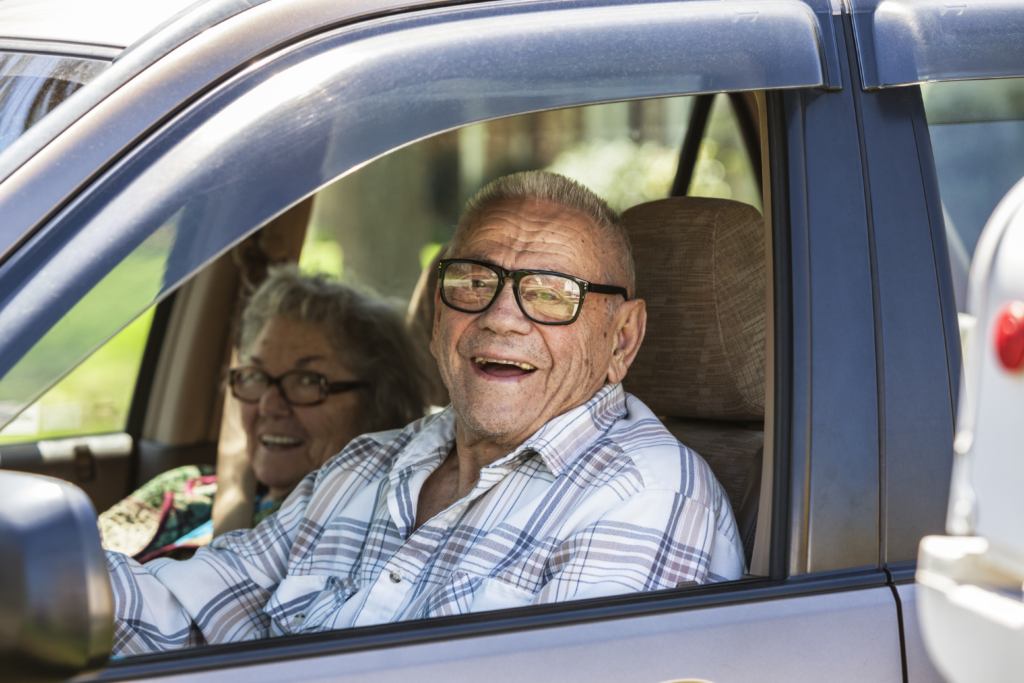
-
Facilitate easy communication between seniors and responders:
You can adapt your smartphone to your senior’s necessities. This can ensure their ability to easily seek help, be informed about any weather fluctuations, and keep alert to any type of danger.
-
Use a flip phone as an alternative to your smartphone:
A classic phone with its built-in huge keys, loud tones, and flashing lights can be easier to use in times of overall panic.
-
Computers designed for seniors:
This is one of our best tips in the disaster preparedness field. The simpler your senior’s computer is, the easier it will be to operate it. At an advanced age, being familiarized with new technologies can be perplexing. The wisest option is to invest in a simple computer with a bright display, a text-to-speech option, and an easy-to-navigate set of apps.
-
Facilitate access to responders:
Being the most vulnerable cluster of the population, seniors need a 24/7 monitoring service to meet their needs everywhere, all the time. When a disaster strikes, your senior’s cellphone might not be within reach. It is primordial to subscribe to a perpetual monitoring service for more safety.
-
Use reminders Wisely:
Automatic reminders make sure your assistance facilities are optimized and ready to be used even in critical times.
-
Keep your senior posted on local breaking news reports:
Technology can be useful in terms of keeping up with the news. Seniors can resort to weather alert radios to be constantly updated with their local weather conditions. Reports by meteorologists can indeed help to anticipate a natural disaster and be fully prepared to endure it. Some weather alert radios send visual and auditory signals to warn you if any extreme weather event occurred.
-
Join a keyless entry system to your vehicle:
Indeed, spending time looking for your keys and fitting them into your vehicle’s keyhole can take some time, especially if you are stressed. This tool can save you valuable seconds in times of tension.
-
Contact responders:
If you want to inquire about resources within your community, feel free to contact the police and fire departments, or consult the American Red Cross branch in your area.
-
Keep your mobility facilities within reach
Always keep your cane, walker, or wheelchair within reach for a quicker evacuation. Consider saving a spare charging battery for times of crisis. Keep them handy as they can save you valuable time.
-
Register for disaster assistance programs
Make sure your senior is comfortable enough with the process of registering for assistance. Filling a form, making a call, and reading an email can be challenging tasks for a person of advanced age. It is best to provide them with the necessary help.
-
Check for local workshops:
Occasionally attending free workshops can grow your survival skills. Collective activities will grant you the full awareness and expertise to act rightfully during a disaster. Search for locally-organized workshops in your area for useful disaster survival training. For more information, consult your local libraries, senior and access centers, FEMA or Homeland Security, Area Agencies on Aging, and Local organizations for particular age groups or disabilities.
Now, let’s move to the next section of dealing with persons with sensory processing issues on Disaster Preparedness For Seniors and People With Disabilities
How Can We Help People with Disabilities in Disasters?
Old age is not the only factor that renders a person vulnerable. Sensory disabilities can also create impediments for certain people and abort their attempts at resisting violent catastrophes.
An individual who is blind, visually impaired, deaf, or has Sensory Processing Disorder (SPD) may struggle to react rapidly to threats. They may fail to detect sensory alert signals and react to them properly.
But before we dive deeper into this part, please check this video, it may help you a lot:
In addition, to the aforementioned tips on how to be well equipped in the face of danger, the following instructions act as safety guides for persons with sensory disabilities:
-
Convert alert signals into modalities suitable for your disabilities:
Address your assistance equipment to your physical strengths. Adapt your gadgets to target your well-functioning sensory faculties for more efficient management.
-
Include medicines in your disaster emergency kit:
When persons with sensory processing disorder are overwhelmed with any type of sensory input, it becomes imperative to supply them with medicines that help them overcome their crisis. Migraine pills and anti-emetics should always be at your disposal.
-
Mount a siren alert device in your car for those who have trouble hearing:
If you are hearing-impaired, this item can make your trip safer. While the signals’ emitted tones cannot be processed properly, the visual messages from your siren can compensate for them and keep you fully aware of any occurring event.
-
Apply this advice in your house as well:
There are plenty of devices designed to accommodate your type of disability. You can opt for Carbon Monoxide alarms, fire and smoke detectors, and weather alert systems that address your sane senses. It is important to minimize reaction time for better danger resistance.
-
Replace your visual signals with auditory ones if you have sight deficiencies:
Gadgets like the Turn-Alarm can produce tones in synchronicity with the exhibited lights. This feature keeps you alert to any surrounding event by addressing your auditory sense.
-
Manage your triggers:
Persons with Sensory Processing Disorder (SPD) can sometimes be overwhelmed by the chaotic effect of disasters. When one of the aforementioned gadgets starts releasing signals, you may lose your ability to focus and act rationally. In this case, you need to indulge in disaster preparation therapy for better mindfulness and stress management.
- Sound: get used to muting all your devices for a less annoying noise. Earplugs are recommended for you, provided that they do not block out all sounds. They should be used to just alleviate the extremity of noise.
- Bright lights: to be fully prepared for the bright lights of your auto-dimming mirrors you can wear polarized sunglasses. You might also tint your vehicle’s mirrors (choose your area’s legal shade). The plastic film will reduce the UV radiation and protect your eyes.
- Smell: keep a facemask within reach or apply some tolerable scent inside your vehicle. You can use essential oil as an organic source. This small tip will enhance your olfactory sensitivity and protect you from being overwhelmed by harsh odors in times of distress.
-
Phone amplifiers:
This tool adjusts your phone’s volume for a better hearing experience. It ensures that your dear ones with hearing deficiencies can hear the phone ringing and the words coming from the other line. Alerts and instructions must be audible to be practical.
-
Voice-clarifying devices for TV audio
An individual with limited mobility cannot afford to turn up the TV volume when a critical warning is being announced. They can use TV Ears instead to clarify the dialogue using less physical energy.
-
Weather alert radio:
Potential extreme weather events can be predicted by such simple gadgets. Pillow and bed shakers and strobe lights can be used to alert heavy sleepers and/or disabled persons about any striking danger.
-
Video phones:
For people who communicate through sign language, the addressee needs to see them. Consider keeping a spare fully-charged battery to use in cases of emergency.
-
Bioptic telescopic glasses:
This type of glasses enhances your visual capacity. The combination of a miniature telescope and two optical lenses allows you to see better at any distance. This benefit allows you to detect danger and have enough time to redirect your vehicle away from it.
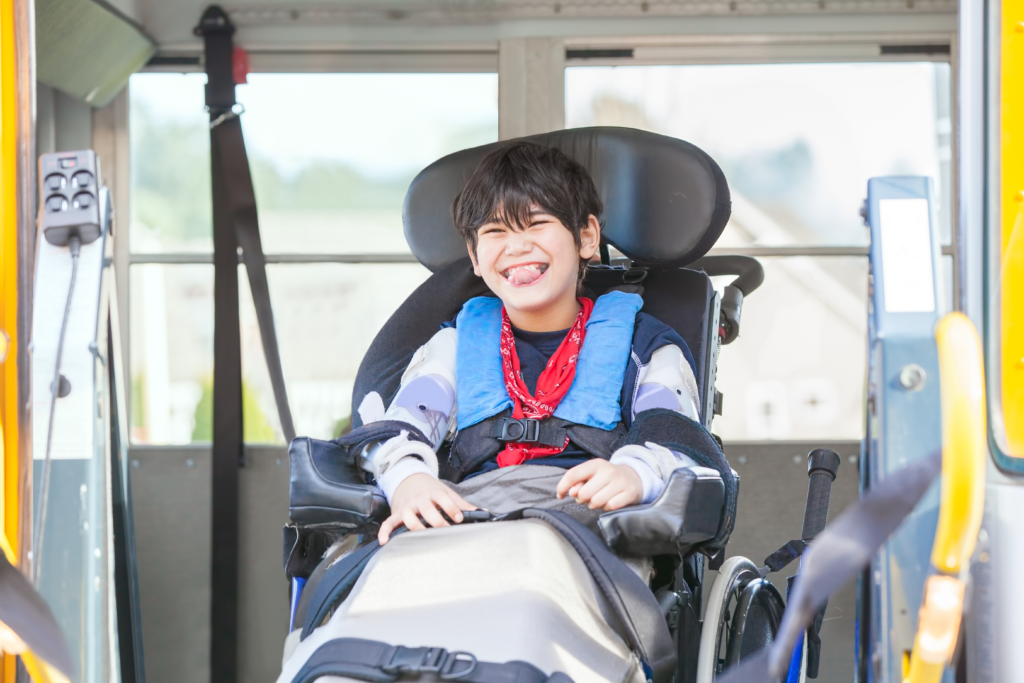
-
Prepare an evacuation plan:
Some manmade or natural disasters would require you to evacuate the ruined area immediately. At times, you may start to feel panicky. This is why it is highly recommended to prepare your evacuation plan beforehand. As such, you will be able to survive the disaster confidently and with the least damage. You can rehearse your withdrawal plan for a smoother response. Make sure you know all the ways to shelters and hospitals and share them with your circle.
-
Be acquainted with your support network:
Knowing that you are well surrounded by caregivers, family members, and assistants and well equipped to resist disasters grants you some relief. However, it is best if you learn how to rely on yourself and react independently to any type of menace at any time. Make sure to take notes about what you need and how to get it. Contact other disabled persons in your area and form networks of discussion for better distress management.
-
Register for emergency assistance:
It is imperative to register in either fire or police departments in your area. If you have a disability, you will certainly need the fastest monitoring intervention. Registering for emergency assistance will save you time and ensure you the support you need during and after the disaster.
-
Search for disability-oriented training:
These trainings are held occasionally to train caregivers and vulnerable communities on how to handle catastrophes. These workshops provide you with safety guidance and introduce you to the assistive technologies that will make your People’s resistance easier.
That’s all for our guide on Disaster Preparedness For Seniors and People With Disabilities. We hope and believe that the provided tips and hacks will help you to survive disasters with your loved ones. God bless our seniors and our people with a disability. Finally, please share your thought on our article. Can you add successful tips on preparing for a disaster with Seniors and People With Disabilities?
Stay Safe
Resources:
- CDC: Emergency Preparedness for Older Adults
- Ready.Gov: Seniors
- American Red Cross: Disaster safety for people with disabilities
- CDC.gov: Emergency preparedness including those with disabilities
This article is for informational purposes only and is not meant to offer medical advice.

A Content Writer & Freelance Translator. He enjoys writing about mental health, fun for seniors, educational apps, and entertainment for all. In his spare time, he enjoys watching football, playing video Games, and good laugh with his friends.

